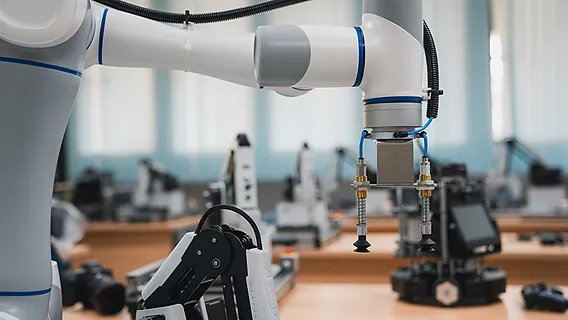
In today’s fast-paced industrial landscape, staying competitive means embracing innovation — and nothing exemplifies this more than the integration of robotic arms in precision manufacturing. These automated systems are no longer a luxury reserved for tech giants; they’re becoming essential tools for manufacturers seeking efficiency, consistency, and unparalleled accuracy.
What Are Robotic Arms?
Robotic arms are programmable mechanical devices that mimic the movement of a human arm. Fitted with sensors, cameras, and advanced software, they can perform delicate tasks like welding, assembling micro-components, or handling hazardous materials with millimeter-level precision. Their ability to work tirelessly and without error makes them ideal for high-precision manufacturing environments.
The Need for Precision in Manufacturing
Industries like aerospace, electronics, automotive, and medical device production demand extremely tight tolerances. Even a slight miscalculation can result in defective products or safety issues. Here’s where robotic arms come into play — they remove human error from the equation and ensure each movement, cut, or placement is done exactly as required, every single time.
Benefits of Using Robotic Arms in Precision Manufacturing
-
Unmatched Accuracy:
Robotic arms can be programmed to execute highly complex movements with extreme precision. Whether it’s placing a microscopic chip on a circuit board or drilling precise holes in aircraft components, these machines perform flawlessly. -
Improved Productivity:
A robotic arm doesn’t need breaks, doesn’t get tired, and works 24/7 without losing efficiency. This boosts production rates and shortens lead times without compromising on quality. -
Reduced Waste:
Mistakes in manufacturing lead to wasted materials and resources. Robotic arms ensure consistency in operations, which drastically cuts down on errors and material wastage. -
Enhanced Safety:
In environments where heat, chemicals, or heavy lifting is involved, robotic arms can handle dangerous tasks that would put human workers at risk. -
Cost Efficiency Over Time:
While the initial investment in robotic arms might seem high, the long-term savings from reduced labor costs, minimized errors, and faster output make them a financially sound decision for most manufacturing companies.
Real-World Applications
From assembling smartphones to producing surgical instruments, robotic arms have found their way into nearly every precision-driven sector. In automotive manufacturing, robotic arms handle everything from painting and welding to engine assembly. In electronics, they are key players in the soldering and placement of miniature components on densely packed circuit boards.
The Future Is Automated
As AI and machine learning continue to evolve, robotic arms are becoming even smarter. Modern systems are now capable of self-calibration, predictive maintenance, and adaptive learning — which means they can adjust to new tasks or detect and fix minor issues before they escalate. This level of intelligence will further cement their role in precision manufacturing.
Final Thoughts
The adoption of robotic arms is no longer just about automation — it’s about transformation. Companies that leverage this technology gain a significant edge in terms of speed, quality, and scalability. Whether you run a small production line or manage a large-scale facility, robotic arms can redefine how you build, assemble, and innovate.




